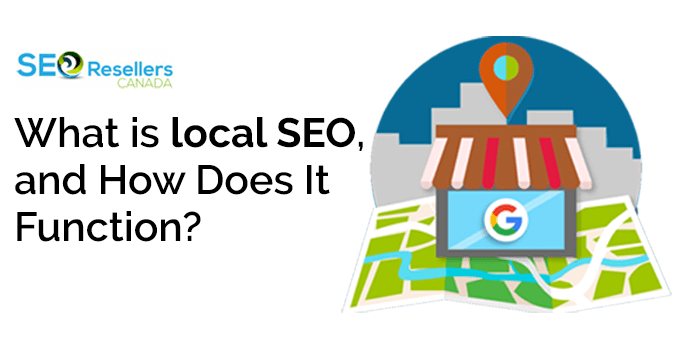Search engines used to be the major source of web traffic until only a few years back. With the explosion of social media, however, marketing on social media networks became rewarding, driving enormous amounts of online traffic to websites.
This opened up a whole new mechanism for SEO. According to experts, even though social media doesn’t directly impact search engine rankings, it certainly is an incredible driver of SEO. What makes things confusing is that Google claims that social media isn’t a significant ranking factor.
In 2018, Hootsuite conducted a detailed study to determine whether social media impacts SEO by comparing the SEO performance of articles with and without promotion on social media. The results proved that an indirect relationship does exist between social media and SEO. The most shared content on social media achieved on average a 22% boost in rankings during the study.
Hence, we know that performing well on social media improves your search engine rank big time. In this guide, we’ll dig deeper into how this relationship works and what you can do to make the most out of this affiliation to achieve your digital marketing goals.
1- How Does Social Media Impact SEO?
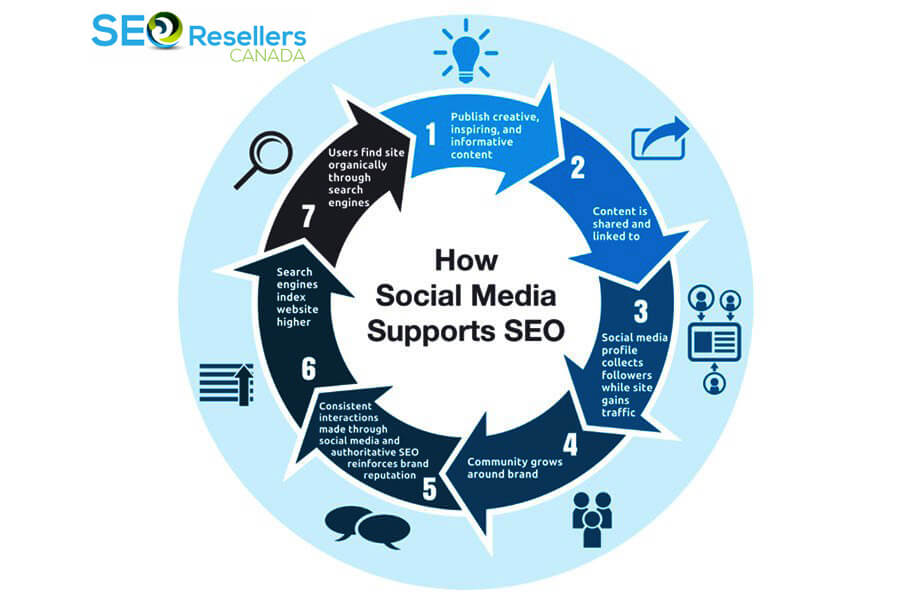
There’s a lot of debate around whether or not social media helps your SEO efforts. It certainly does, but not in the way many people think.
If you’re really determined to benefit from the controversial relationship, you’ll need to know exactly what aspects of social media impact SEO and what factors do not.
Before anything else, bear in mind that Google’s algorithm is not crystal clear. While many of us have a considerable idea about how it works and what it values, no one is aware of its exact ranking mechanism. The insights we know are those shared by Google itself and those found via case studies.
During the early years of social media, Google kept on denying that social signals aren’t a direct ranking factor. Yet, the former head of Google’s webspam team, Matt Cuts, reveled in a video that Google did use links from Twitter and Facebook to rank pages. In his next video in 2014, he said that Google doesn’t treat a Twitter or Facebook page as a ranking factor but considers it as any other webpage.
The following diagram explains how Social media SEO works:
However, just because Google claims that social media is not a ranking factor doesn’t mean that social networks don’t influence search rankings.
It discovered that the websites dominating the top Google search results display far more social signals than other ranked sites, proving a clear overlap between websites performing well on social media and being rewarded with a high search engine rank.
This strong correlation makes us believe that social media shares are regarded as individual links, even though Google says that they aren’t.
A fascinating post on social media that gets a lot of likes and shares will improve your Google search rank, perhaps because social shares are counted as individual links. Although the impact is huge, you can’t still say that social signals are a direct ranking factor.
1.1- The Power of Links
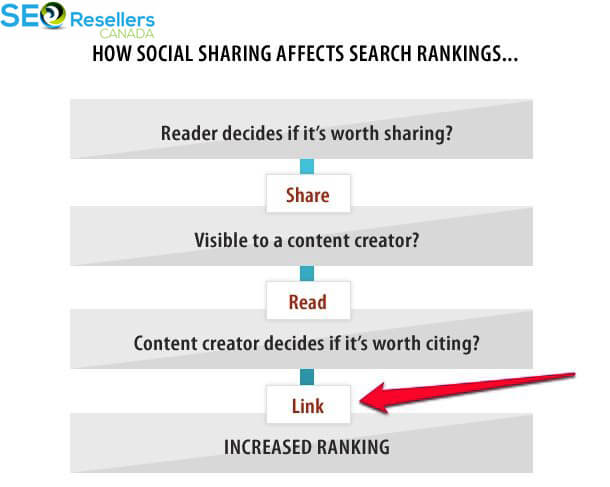
The higher the number of shares on social media, the greater the reach of the content and more and more people will view it and link to it.
Based on a case study, a business managed more than 130,000 shares to a webpage, which soon made it to the top of the SERPs for the keyword “unhealthiest foods”.
While most of us might perceive Facebook shares as ranking signals, that’s not entirely true. What really matters are the links that are generated from shares on Facebook.
Thus, whether it’s Facebook, Twitter, or Pinterest, posting valuable content with the right targeting will get traction and gain popularity on social media, attracting potential links, which in turn improves your search engine rankings.
1.2- Your Fan Base on Social Media
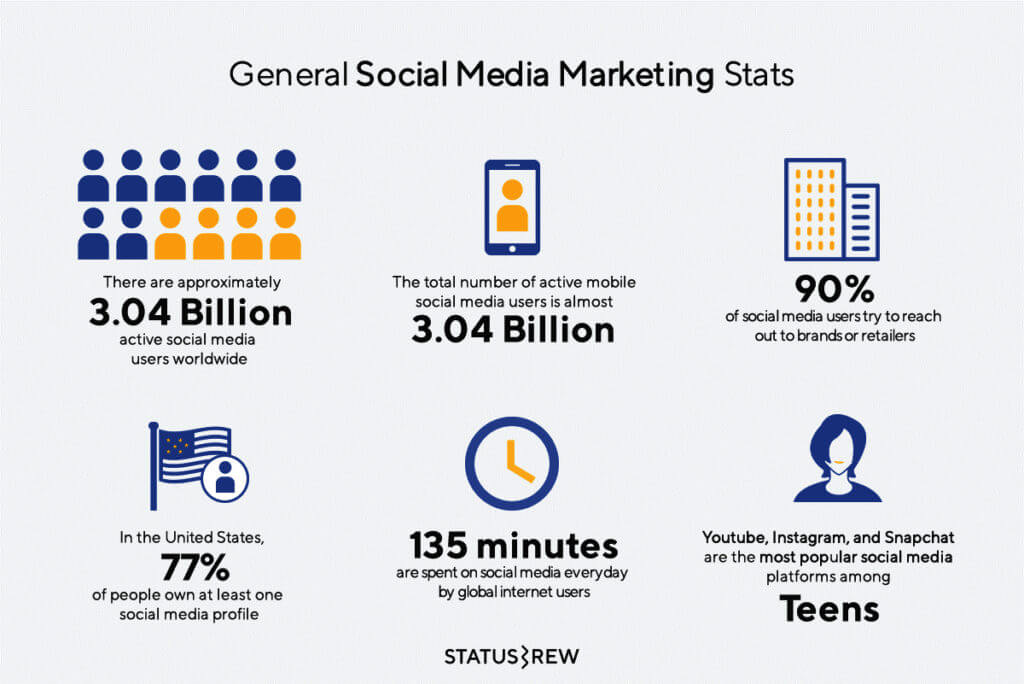
There’s a reason why social media networks offer a goal of “building brand awareness” when you choose to advertise your business page through them.
The answer is simple: having a large fan or follower base really pays off, given that the followers are genuinely interested in your brand.
When it comes to gaining popularity for your brand, no other channel beats social media. 2 billion users use Facebooky, which means that if you have a target audience, it’s most certainly present on the platform.
Social media’s massive penetration levels, coupled with the ease of content sharing, offers an unprecedented way to establish your online presence and build your following in no time.
To build your brand awareness, you will thus have to optimize your social game.
You probably know how critical click-through rates for your website’s search rank. When you grow your follower count on social media, more and more people become aware of your brand.
Many of those followers will search your business name on Google to find your official website. They’ll click on the links to landing pages of your website.
Let’s take a look at the Google search results below for the query “how SEO works”:
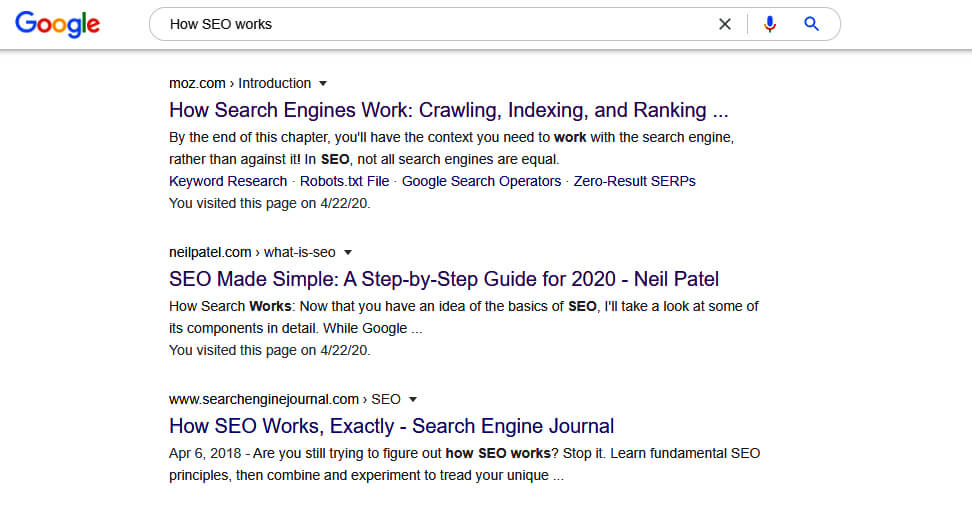
Since you personally know about Moz, Neil Patel, and Search Engine Journal and their reputation in the world of digital marketing, you’re probably going to click on their sites as opposed to other sites.
No matter what, users are likely to visit websites they know and trust than those they see for the first time.
The number of clicks your website gets is thus directly linked to the familiarity and image of your brand.
Hence, if you’re looking to improve your brand image and get in front of people who wouldn’t have found you otherwise, social media can be of great help.
While this itself should greatly improve your site’s SEO performance, the additional clicks your landing pages get when users visit them are even more effective for their search rank.
Hence, your social media following may not serve as a direct ranking factor itself, but the resulting click-through rates it may generate can do wonders for your SEO performance.
1.3- Branded Searches
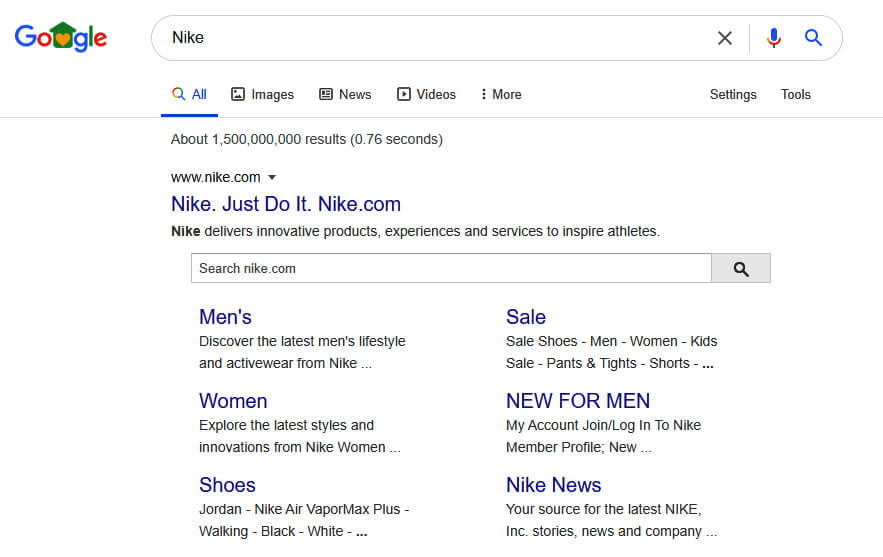
Branded searches on search engines is another amazing benefit of having a large social media following.
When someone who knows about you searches your business name along with a keyword or phrase on Google, it might improve your rank for similar keywords or phrases.
To understand this better, look at this example. Suppose you are an apparel company and one of your Twitter followers wants to buy a t-shirt from you.
They enter the term “[YourBrandName] t-shirts” and engage will well with your website, clicking and navigating different categories and product pages on your website.
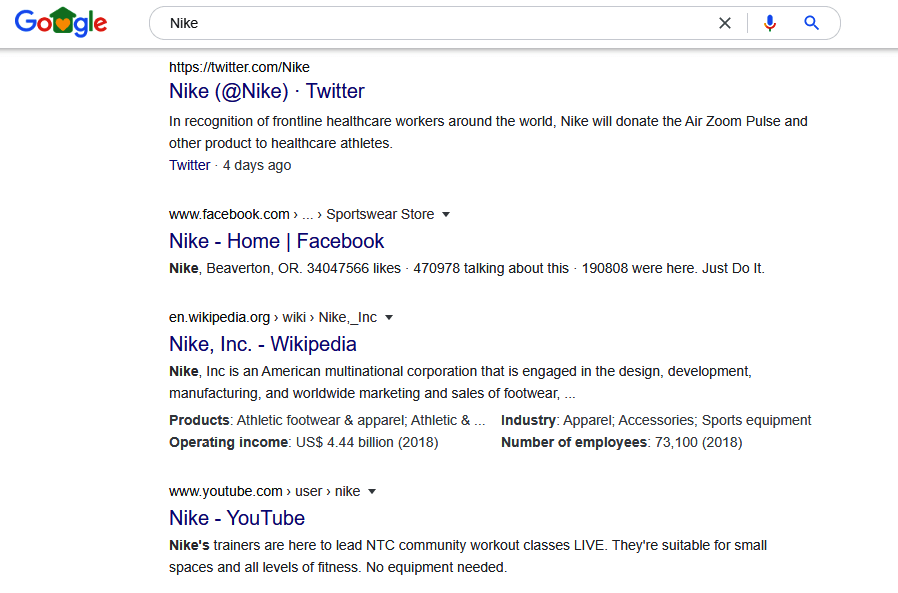
The engagement and click-throughs will prompt Google to rank your website well not only for the searched keyword but also for the keyword ‘t-shirts’.
This way, you might start ranking well for the term ‘t-shirts’, which can further improve your organic reach.
An analysis conducted by Search Engine Journal explains how a huge Instagram following helped improve the SEO for an ordinary fashion website.
FashionNova, according to Alexa, had an Instagram following of 6.3 million.
Because you don’t have too many linking opportunities on Instagram, followers turned to Google to find the brand’s official website.
As a result, it gained hundreds of thousands of branded searches per month for terms such as “fashion nova jeans”.
On top of that, the site achieved a remarkably low bounce rate (much higher than other sites), largely because of the highly qualified traffic.
Visitors interacted well and stayed longer on the site.
Because “fashion nova jeans” was searched for over 100,000 times a month, Google was forced to believe that the site certainly connects well with the term ‘jeans’.
The site eventually made it to the top of the search results page for that term. In fact, Google recognized and ranked the site well for 88,000 keywords in the course of a year.
When this happens, you’re tempted to believe that the traffic you get from social media is not only more productive in terms of your search engine rankings but also more lucrative given the higher chances of conversions.
1.4- Promotions

Let’s talk about YouTube and how it impacts your company’s SEO performance.
If you’re not already aware, YouTube is the second most-searched search engine, but its search intent is hardly about business and products. Thus, it doesn’t promise customers who convert like Google does.
Yet, this doesn’t mean the platform adds no value to your SEO performance. YouTube can still be helpful if you create engaging, high-quality videos to advertise your brand.
If the content leads to links and genuinely creates value for people, your YouTube videos my start ranking organically on Google search results.
Just because your YouTube videos hosted on YouTube don’t create any serious SEO value doesn’t mean they won’t work elsewhere.
You may consider developing a different website for your YouTube videos or share them on other social platforms. An example of this is how the brand “Will it Blend” made a website out of their YouTube videos:
If your audience is there on social media and is genuinely interested in your brand, you should be able to acquire high-quality backlinks, thereby improving your SEO performance.
While the discussion above explains how social media impacts SEO, things are much more challenging for B2B businesses.
This is because social media marketing is all about engagement in the form of likes, comments, and shares, all of which become hard if you’re trying to sell to businesses rather than end consumers.
The problem is that people use social media to connect with others and are more concerned about their hobbies and interests. They hardly think about work while scrolling down their feeds.
Thus, you will need to think of ways other than your service offering to engage people and build up your following so that your social signals improve your business’s SEO performance.
2- Social Media SEO Strategy
Now that you know that your social media efforts can significantly boost your SEO performance, you don’t want to lose on potential, high-quality traffic that comes from social networks.
To make the most out of social media SEO to achieve your business goals, you will need to align your social media marketing strategy with your SEO strategy.
The following tips should be extremely valuable in devising your social media SEO strategy:
2.1- Post Content that Creates Value
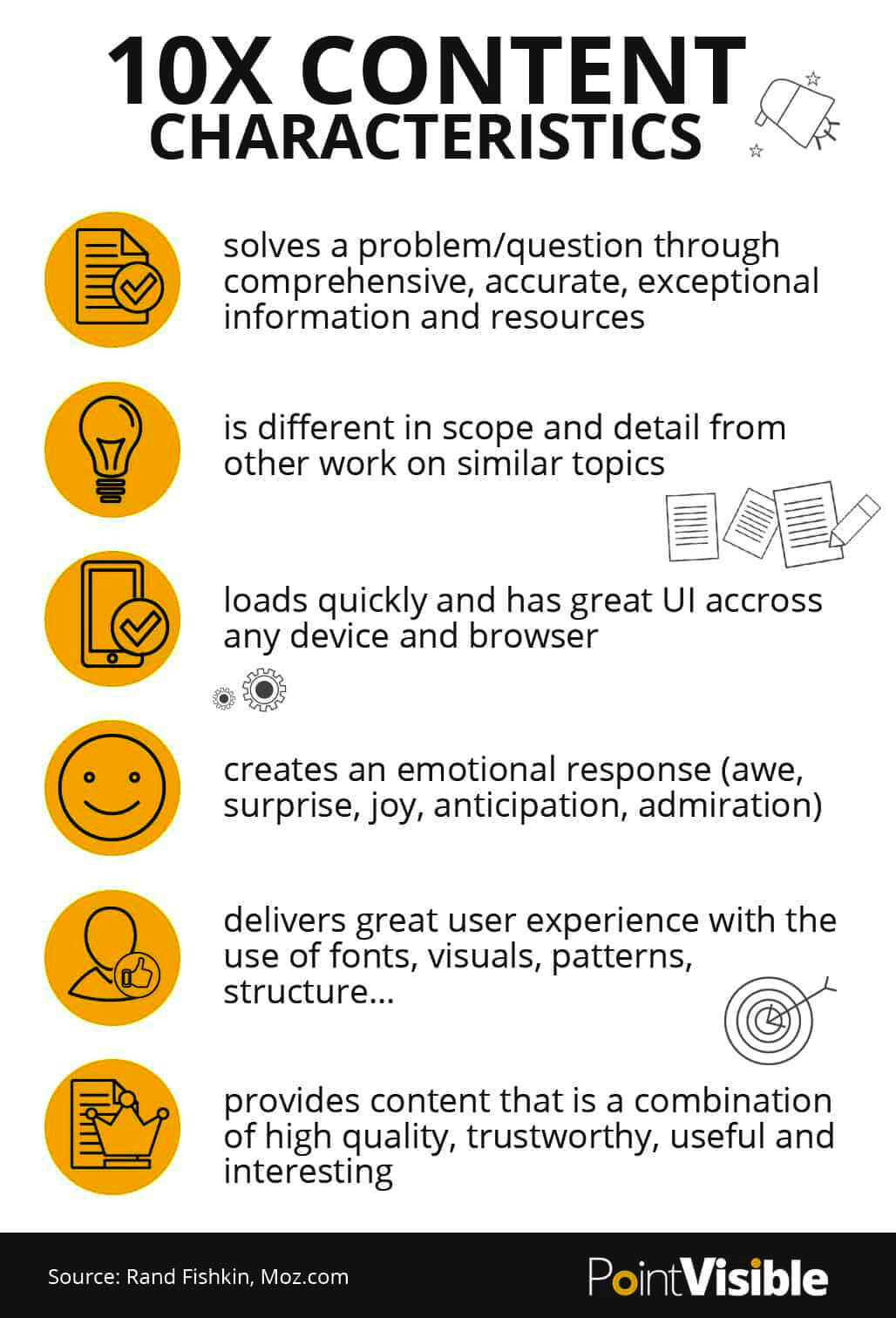
Search engines, especially Google, are now more intelligent than ever in understanding search intent and ranking web results.
You can no longer artificially manipulate the rankings, which means keyword stuffing won’t work. That not only holds true for the content on your website but also for everything else that you post on your social media pages.
Google values high-quality content that creates immense value for users, whether that be a webpage or a high-shared link on social media.
You need to create fresh, unique social media content to ensure that it ranks for the right keywords on search engines.
Honestly, you’ll find yourself climbing the SEO ladder effortlessly if you’re able to provide people exactly what they’re looking for and produce content that naturally attracts links.
But how do you create high-quality, valuable content? The best approach is to understand your ideal customer, view things from their perspective, and figure out what they are looking for.
Once you build your buyer’s persona, you will know what type of content to create for your social media pages and website.
Understanding your audiences will make your social media posts insightful and resourceful and this will increase the number of clicks and drive traffic to your website.
Give the high relevance of the traffic, the bounce rate will also be lower while the chances of conversions will be higher.
You must already be using a keyword strategy for your website. Apply the same keyword strategy to your social media engagement with the above guidelines in mind. Again, no need to stuff the keywords in tweets and posts.
Staying conscious of how you are phrasing your social media content should allow you to incorporate them naturally.
Including keywords in your social media content not just helps in social media SEO but also improves your audience reach on the platform itself.
2.2- Promote Social Sharing
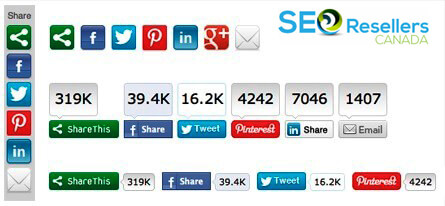
When your followers and fans on social media share your content, your posts reach greater audiences as everyone in the person’s network views it.
Your followers already have a need for your content, which is why they are following you, but other people might also be interested in your content.
Social sharing connects your brand with a larger segment of social media, thereby increasing the reach of your brand message. Given that you consistently use targeted content, it will greatly improve your brand’s visibility.
To encourage viewers to share your content on social media, adding social media buttons on your site is not enough. Social sharing won’t happen unless your content is good enough for people to talk about it.
You will need to work on your content to make it as entertaining, enticing, and helpful as possible to motivate people to share it with their followers.
2.3- Optimize Your Social Media Profiles
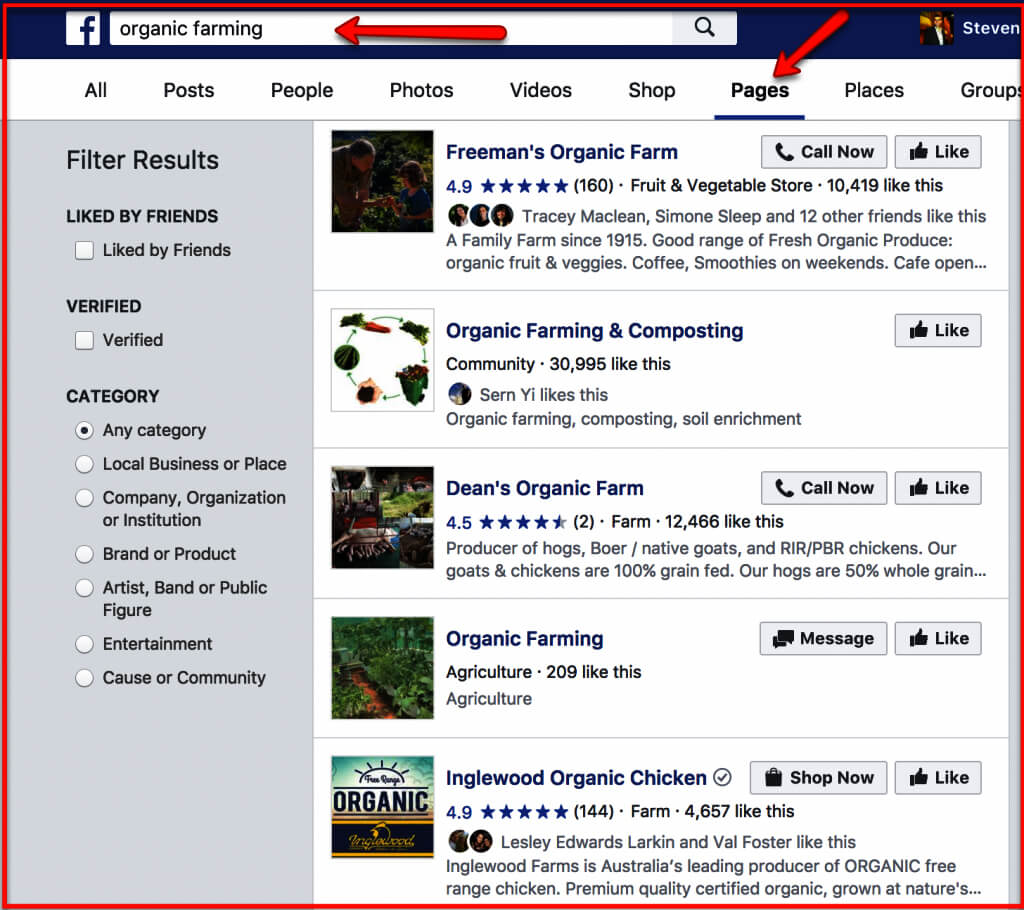
If you haven’t optimized your social media business profiles yet, you are probably ranking much lower on Google than you deserve to.
No matter how valuable your content is, if your business profiles are not optimized and consistent with the content on your website, people won’t be able to find you.
Did you know that social media channels serve as search engines too? Brand-related and other searches are no longer just confined to Google and Bing. Social media users often use social media sites to find what they’re looking for.
The modern SEO, therefore, is not just about boosting your rank on Google and other search engines but also about ensuring your presence on social media search engines.
This way, people who are aware of your brand and are interested to consume your content will simply search your business name of social media search engines and find your content.
If your social media strategy focuses on visually captivating content on Instagram and Pinterest, then you should properly categorize pins and use hashtags to make it more searchable and visible on the platforms.
Optimizing your profiles ensures that even someone who doesn’t know much about your business can search your business on Facebook, Twitter, and even YouTube to learn more about your company or see the type of presence you have on social media.
Therefore, your social media SEO strategy should focus on ranking not only on traditional search engines but also on social search engines.
So how do you optimize your business profiles for social search engines and be searchable on them?
To optimize your profiles for social search engines, think of your social media presence as an extension of your official website.
We have already looked into how incorporating keywords in the content you share on social media makes it more visible on Google and other traditional search engines.
The same should be helpful to improve your visibility on social search engines.
Optimizing your social business profiles also involves including the right keywords in profile bios and descriptions and making sure the information is consistent with the website’s ‘About Us’ page. Also, the contact information, address, and other details on all your social media profiles should be consistent with your website’s “Contact Us” page.
This consistency of information makes your social profiles more credible in the eyes of social media users as well as Google, which is more likely to rank your website and social pages higher. Remember, the Google algorithm places a huge emphasis on the authenticity of the website while ranking them.
However, since social media is still not as authentic as Google, one may come across multiple social media profiles with the same brand name as they search for a business on social search engines.
This confuses the users regarding which profile is authentic and official.
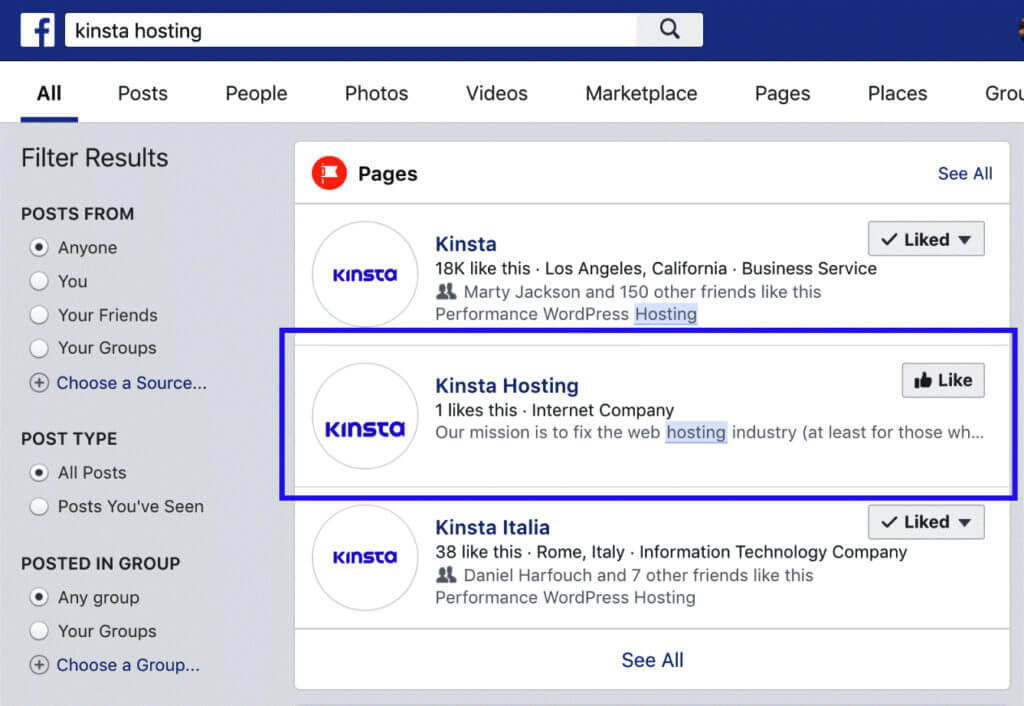
Optimizing your social media profiles by ensuring that the brand name, colors, descriptions, bios, contact details, addresses, etc., used are all consistent with your website should make it super easy for your audiences to identify your correct profile.
Don’t forget to include the keywords you want to rank for on both social and traditional search engines.
2.4- Optimize Your Images for Both Traditional and Social Search Engines
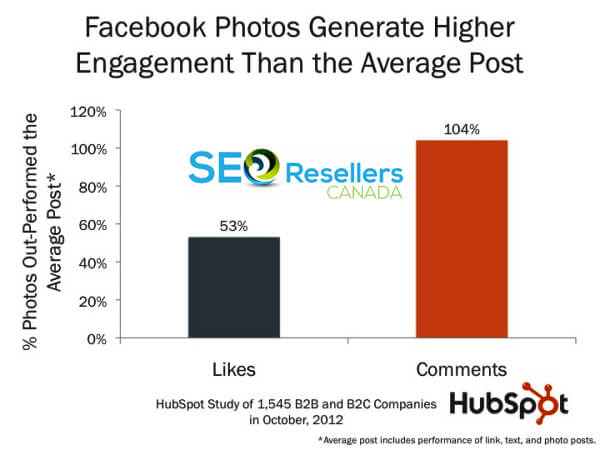
Some people might wrongly take high-quality content as text-only. When we refer to content sharing, we refer to all types of posts including text, images, videos, GIFs, podcasts, and more.
No one is denying the worth of written content such as blog posts on your website in boosting your SEO performance.
Yet, if you have been marketing on social media for a while now, you must be aware of the impact of graphic content such as images and videos on viewers.
Owing to this remarkable impact, they happen to be the most liked and shared type of content on Facebook, Twitter, and other social channels.
According to a HubSpot study, Image posts on Facebook generate 53% more likes than the average post, as indicated by the graph below:
However, images don’t just help foster engagement on social media platforms; the solid impact they make on users also helps drive organic traffic to your website.
However, if you want your images to rank, your images will need to be optimized.
This involves including the keyword in the file name, including relevant surrounding text, adding the right alt-text, and making sure that they are in the ideal format.
Note down the ideal image size for each social media platform you are using and create your image posts accordingly.
Here are the ideal image dimensions for some of the most popular social media platforms:
- Facebook Image Posts:1200 x 900 pixels
- Twitter Image Posts:1024 x 512 pixels
- LinkedIn Image Posts:700 x 520 pixels
- Instagram Image Posts:
- 1080px by 608px (Landscape)
- 1080px by 1350px (Portrait)
- 1080px by 1080px (Square)
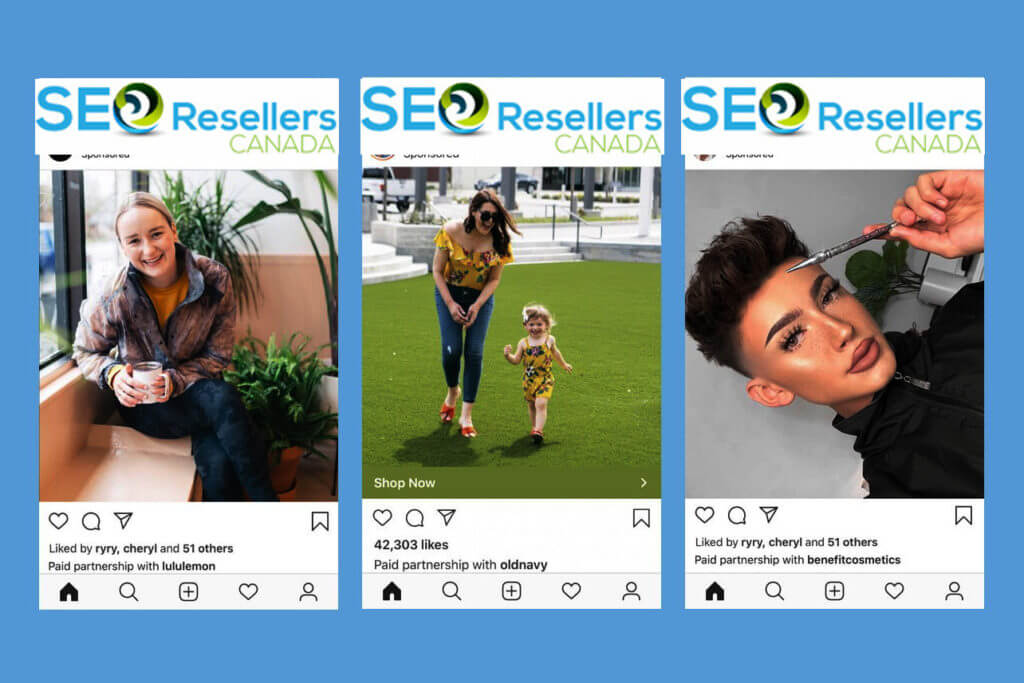
You must also consider optimizing your image posts for social sharing by ensuring that they’re appealing and are posted on the social media platforms used by your target audience.
For instance, if your primary target market is the millennial generation or Generation Z, you might want to prioritize Instagram for sharing image content.
2.5- Incorporate Links at the Right Places
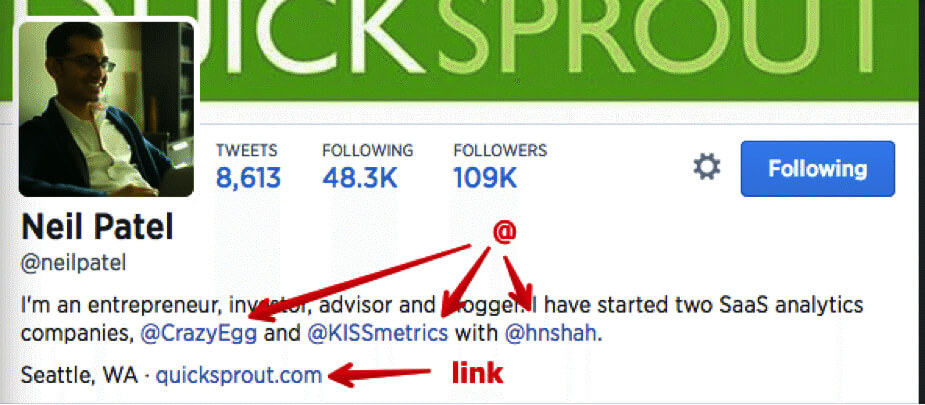
If you think that incorporating links to your website in the content you share on social media will pass on Facebook or Twitter’s SEO authority to your website, you’re misinformed.
The links in your tweets and Facebook status updates are no-follow links, which means they won’t transfer or carry the SEO authority to your linked website.
There’s now a twist in the story though. The URL or link that you add in the profile or bio section of your social business profile is a follow link.
Therefore, you must include a link in those sections to take advantage of the SEO authority of the social platforms.
Moreover, when you share videos on YouTube or presentations on SlideShare, be sure to add links to other content on your website.
This will not only increase your web traffic but also help build new inbound links. For instance, someone who writes a blog post about your video or presentation may want to include a link from your content simply because it’s an easy way to source their work.
2.6- Build Your Social Media Reach
We have already talked about how social media following amplifies your social media reach to newer audiences through social sharing.
There is, however, another effective way your social media reach improves your website’s SEO performance.
Just because the links you add in your social media posts are no-follow links doesn’t mean they are worthless.
Just as inbound links improve your website’s SEO performance, the links that you include in your social media posts bring qualified traffic to your website.
You’ll see lower bounce rates and higher click-through rates, both of which help in SEO as well as directly boost conversions.
The web traffic will, however, depend on your social media reach. If you’re able to reach massive audiences on social media through quality content creation and engagement, you’ll be building inbound links in a way.
2.7- Build Partnerships
Building strategic partnerships on social media platforms also helps with ranking and SEO. It’s true that social media has a large number of users but reaching out to them organically is not only difficult but also consumes a lot of time and energy.
To overcome this, you may want to focus on fostering partnerships, which can be done through social media.
When it comes to building relationships, you can focus on three aspects:
2.7.1- Brand Fans
These are your top fans who love your brand and often recommend your content to others through shares.
These profiles help build brand mentions on social media and improve the exposure of your content. You develop them through regular engagement.
2.7.2- Organic Influencers
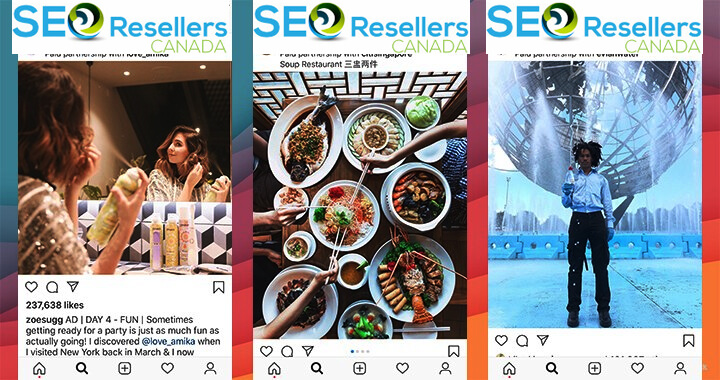
This is the most precious level of relationship-building that you can develop on social media.
Organic influencers are profiles on social media who are a trusted authority, are subject matter experts, and have influence in the respective industry.
They are popular in your industry and have a huge following on social media.
However, when marketers talk about influencer marketing, they often refer to paid influencers.
They are different from organic influencers in that you need to pay them to promote your content.
To get positive endorsement for your brand or products with organic influencers, you will need to possess high-quality content that genuinely creates value for the audiences in your industry.
2.7.3- Strategic Partners
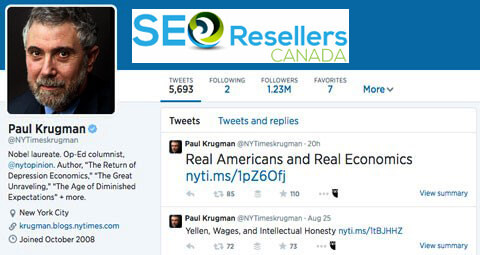
These are influential, non-competitive business profiles on social media with whom you work to co-create high-quality social media content and valuable experiences that reach the audiences.
Because of mutual interest, this relationship-building level can prove highly successful for your social media reach and SEO performance.
Building partnerships on social media helps give a tremendous boost to your brand reach and thereby improve link opportunities far beyond what you can do yourself.
Therefore, you should consider diverting most of your social media efforts in all the three levels of relationship-building explained above.
The best approach is to explore the best accounts for each level, keep tracking them, and start engaging with their content in the form of regular likes, comments, and shares.
However, a robo-like approach is not enough to catch the attention of your target profiles. Be it top fans, organic influencers, or strategic partners, you will need to prove yourself to them.
The most effective way to do this is by offering valuable assistance in a project they talk about or helping them answer questions.
This may sound time-consuming but once you’re able to impress an influencer, for instance, the results can be huge for SEO and social media marketing itself.
Consider how you can benefit by winning the following influencer for your financial consultancy website:
3- Closing Thoughts
Given the rapidly changing dynamics of the Google algorithm and the popularity of social media, marketers need to broaden their understanding of SEO.
Now that you are crystal clear on how social media and SEO work together to increase your ranking and popularity, follow the social media SEO strategies explained above to achieve your ultimate business goals.
We, at SEO Resellers Canada, can help you develop and execute an efficient social media SEO strategy. To know more, get in touch with us.























